Tunnel Effect in Quantum Science Alexander Gabovich ,
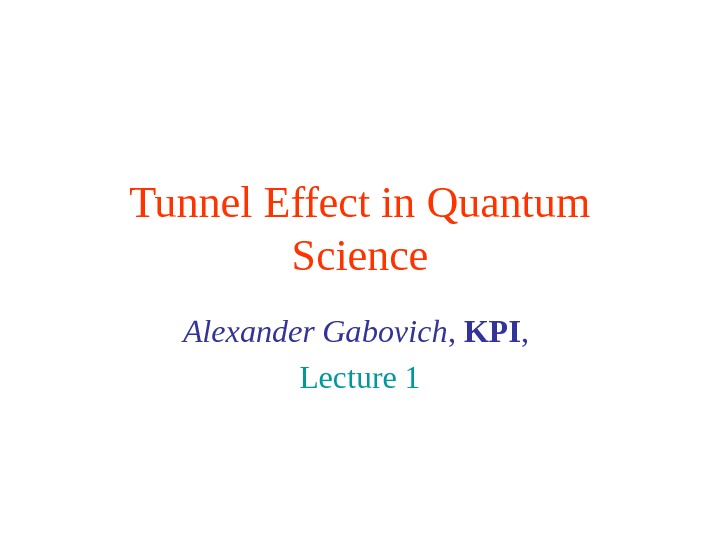
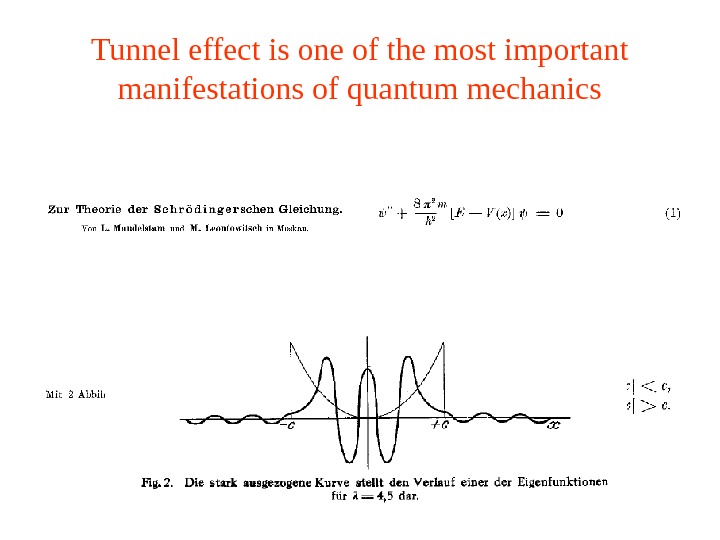
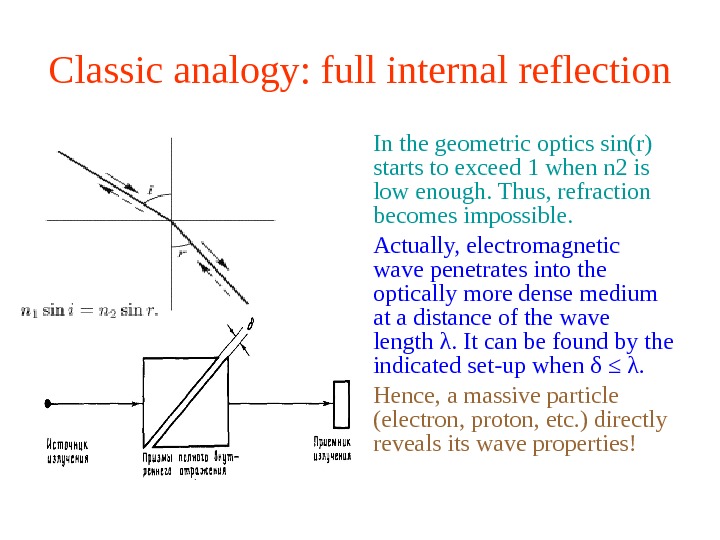
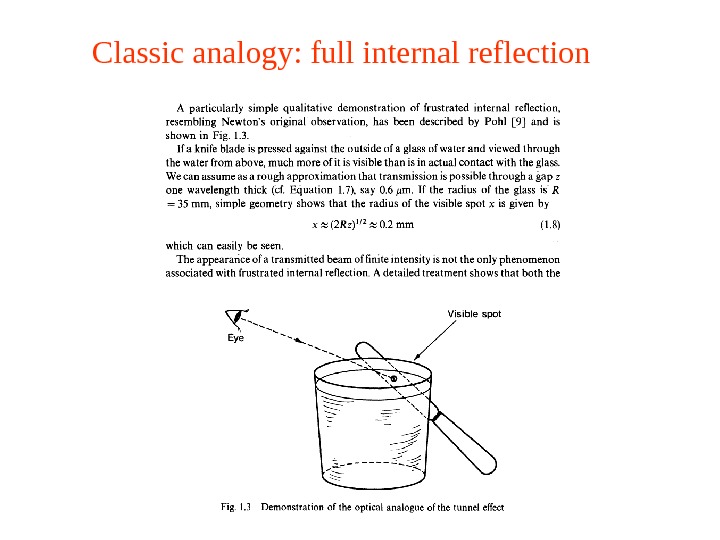
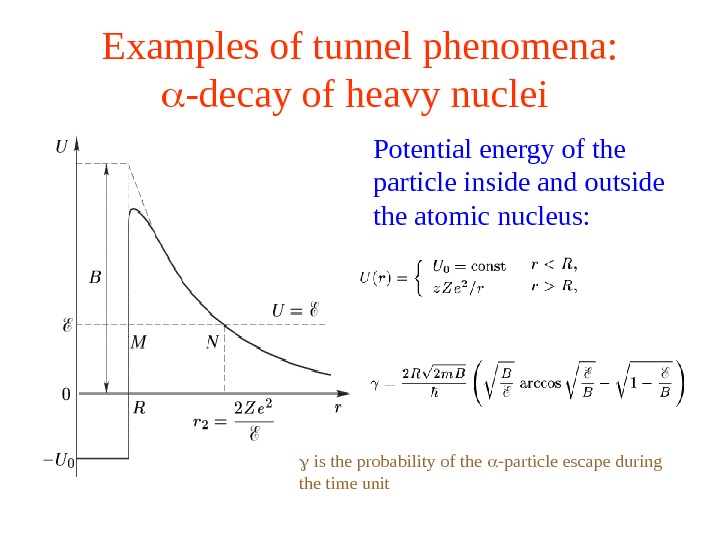
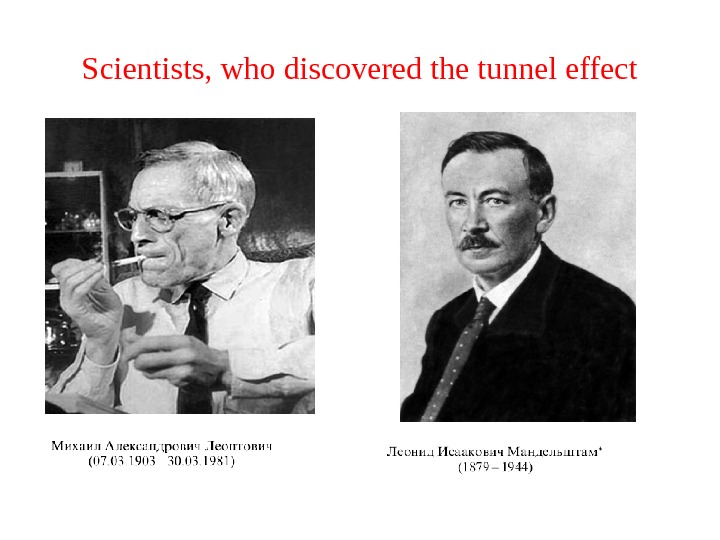
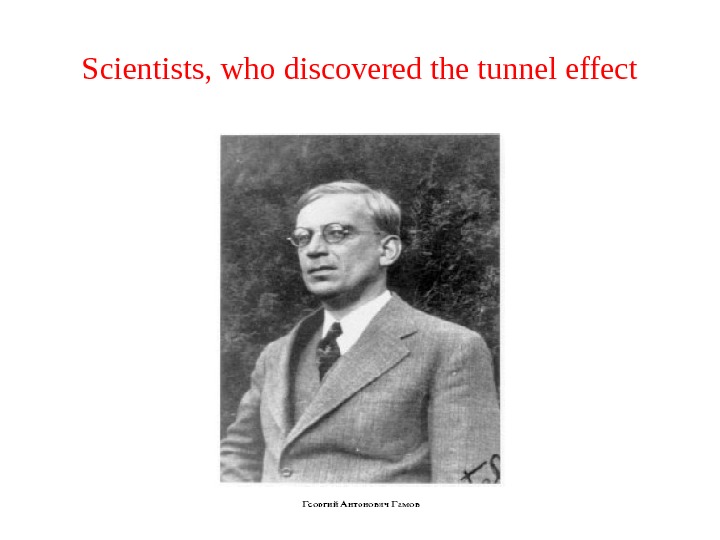




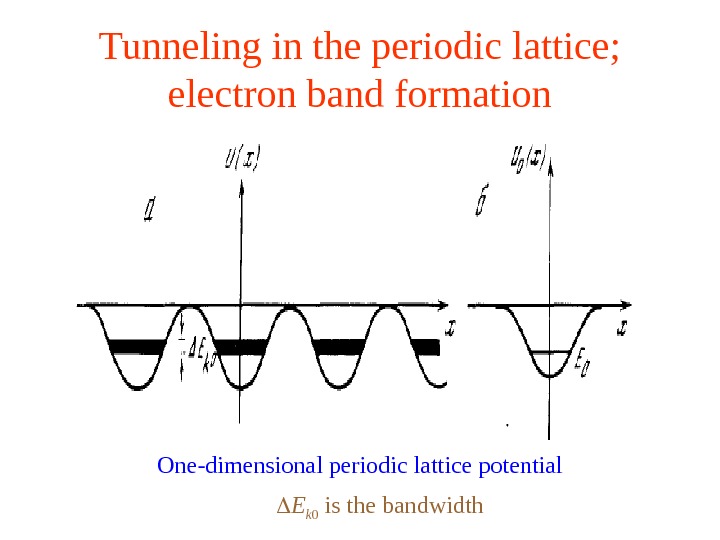





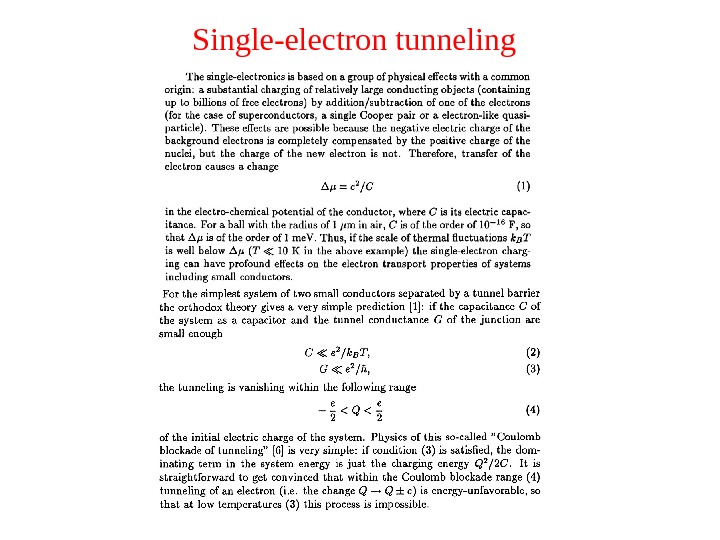
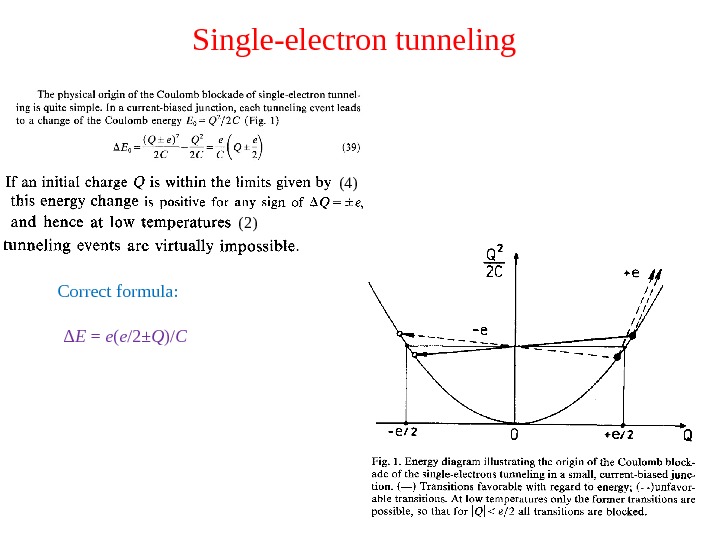
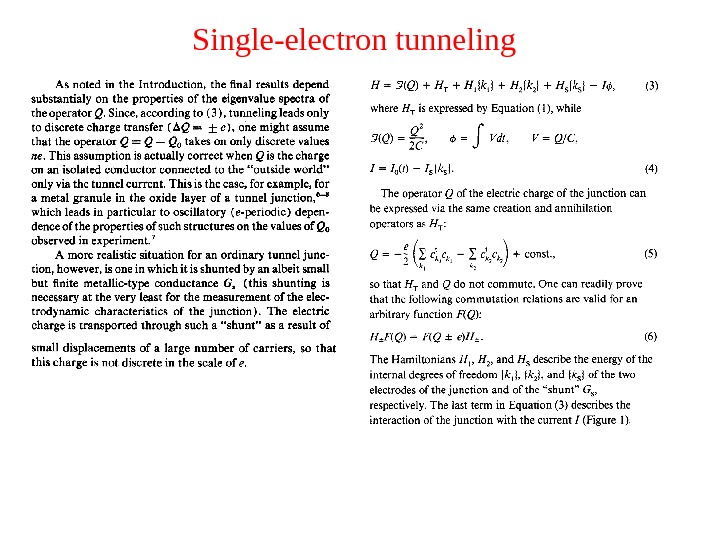

lect1tunnel_effect_in_quantum_science.ppt
- Размер: 2.5 Mегабайта
- Количество слайдов: 21
Описание презентации Tunnel Effect in Quantum Science Alexander Gabovich , по слайдам
 Tunnel Effect in Quantum Science Alexander Gabovich , KPI , Lecture
Tunnel Effect in Quantum Science Alexander Gabovich , KPI , Lecture
 Tunnel effect is one of the most important manifestations of quantum mechanics
Tunnel effect is one of the most important manifestations of quantum mechanics
 Classic analogy: full internal reflection In the geometric optics sin(r) starts to exceed 1 when n 2 is low enough. Thus, refraction becomes impossible. Actually, electromagnetic wave penetrates into the optically more dense medium at a distance of the wave length λ. It can be found by the indicated set-up when δ ≤ λ. Hence, a massive particle (electron, proton, etc. ) directly reveals its wave properties!
Classic analogy: full internal reflection In the geometric optics sin(r) starts to exceed 1 when n 2 is low enough. Thus, refraction becomes impossible. Actually, electromagnetic wave penetrates into the optically more dense medium at a distance of the wave length λ. It can be found by the indicated set-up when δ ≤ λ. Hence, a massive particle (electron, proton, etc. ) directly reveals its wave properties!
 Classic analogy: full internal reflection
Classic analogy: full internal reflection
 Examples of tunnel phenomena: -decay of heavy nuclei Potential energy of the particle inside and outside the atomic nucleus: is the probability of the -particle escape during the time unit
Examples of tunnel phenomena: -decay of heavy nuclei Potential energy of the particle inside and outside the atomic nucleus: is the probability of the -particle escape during the time unit
 Scientists, who discovered the tunnel effect
Scientists, who discovered the tunnel effect
 Scientists, who discovered the tunnel effect
Scientists, who discovered the tunnel effect
 Cold emission of metal electrons Cold emission current E is the external electrostatic field
Cold emission of metal electrons Cold emission current E is the external electrostatic field
 Cold emission of metal electrons
Cold emission of metal electrons
 Oscillation of a particle between two potential wells Separate wells Coupled wells. Initially the particle is in the left well
Oscillation of a particle between two potential wells Separate wells Coupled wells. Initially the particle is in the left well
 Oscillation of a particle between two potential wells Results of calculation: W ( t ) is a probability of the particle to occur in the left well at the moment t Limiting cases: The particle spends equal times in both wells The particle is predominately in the left well
Oscillation of a particle between two potential wells Results of calculation: W ( t ) is a probability of the particle to occur in the left well at the moment t Limiting cases: The particle spends equal times in both wells The particle is predominately in the left well
 Tunneling in the periodic lattice; electron band formation One-dimensional periodic lattice potential E k 0 is the bandwidth
Tunneling in the periodic lattice; electron band formation One-dimensional periodic lattice potential E k 0 is the bandwidth
 Franz-Keldysh effect Tunneling probability W (B C) from the valence band AB into the conductance band CD is proportional to exp{- c [ ε g ] 3/2 / E }, where ε g is the forbidden-gap width. This is Zener effect. It changes the coefficient E of the light absorption in a semiconductor in the homogeneous electric field E. This is Franz-Keldysh effect.
Franz-Keldysh effect Tunneling probability W (B C) from the valence band AB into the conductance band CD is proportional to exp{- c [ ε g ] 3/2 / E }, where ε g is the forbidden-gap width. This is Zener effect. It changes the coefficient E of the light absorption in a semiconductor in the homogeneous electric field E. This is Franz-Keldysh effect.
 Tunneling in chemistry
Tunneling in chemistry
 Tunneling in chemistry
Tunneling in chemistry
 Tunneling in chemistry
Tunneling in chemistry
 Tunneling in chemistry
Tunneling in chemistry
 Single-electron tunneling
Single-electron tunneling
 Single-electron tunneling (4) (2) Δ E = e ( e /2± Q )/ CCorrect formula:
Single-electron tunneling (4) (2) Δ E = e ( e /2± Q )/ CCorrect formula:
 Single-electron tunneling
Single-electron tunneling
 Single-electron tunneling
Single-electron tunneling
